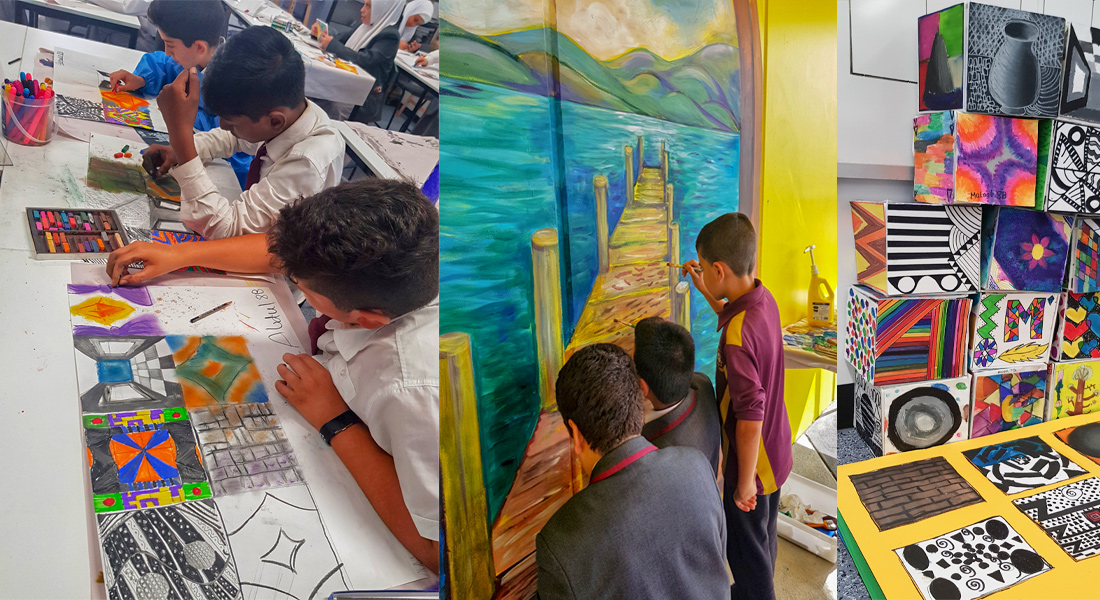Visual Arts Overview
At the Islamic College of Melbourne, students benefit significantly from the experiences they encounter in art. Art making provides an opportunity to expand the art language. This language assists students in manipulating and organising design elements and principles to achieve planned compositions. During semester one, students create 3D artworks made of six individual beautiful art pieces, integrating the art elements and principles of knowledge and imagination.
The spirit of Ramadan is our primary focus for the second half of the semester. The holy month can take us on a beautiful Islamic Art project journey that starts with research on Ramadan and Islamic designs. During semester two the complexity of art skills and techniques increases. Students learn about 2D and 3D drawing methods that are carefully applied to challenging perspective drawings of buildings as well as in rendering realistically 3D objects.

The Visual Communication Design Study examines the way visual language can be used to convey ideas, information and messages in the fields of communication, environmental and industrial design. Designers create and communicate through visual means to influence everyday life for individuals, communities and societies.
Visual communication design relies on drawing as the primary component of visual language to support the conception and visualisation of ideas. Consequently, the study emphasises the importance of developing a variety of drawing skills to visualise thinking and to present potential solutions.
Students employ a design process to generate and develop visual communications. The design process provides a structure to organise design thinking and is shaped by considerations of aesthetics and functionality, as well as social, cultural, environmental and economic factors.
Students develop the skills to communicate ideas through manipulation and organisation of design elements, design principles, selected media, materials and methods of production. Creative, critical and reflective thinking supports students to progress through the design process. Throughout their studies students explore manual and digital techniques to develop and refine presentations.
During their study students have the opportunity to investigate the work and practices of contemporary designers. Through their research, they build an understanding of the critical role of visual communication design within society.
Students can draw upon this knowledge as inspiration to support the development of their visual communication design work. With practice, students gain confidence in using visual language and are supported to reflect on and critique their own and others’ visual communications.
